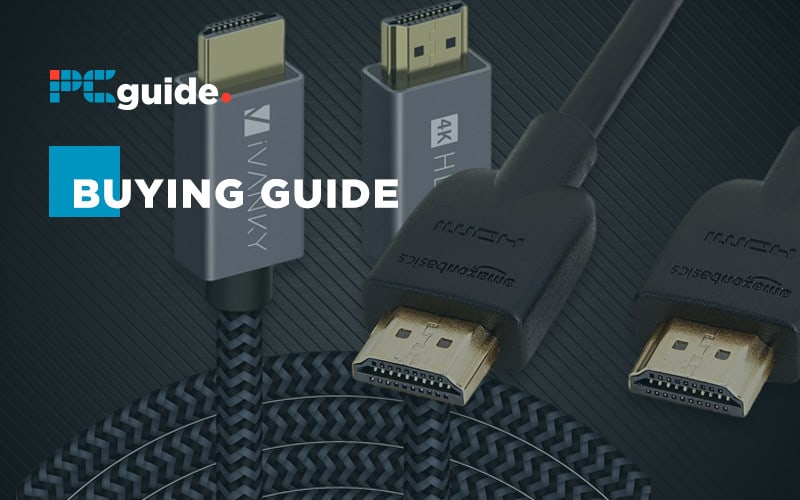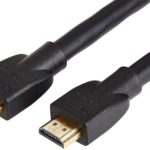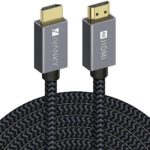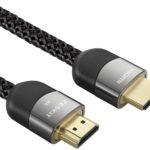Best HDMI cable

The modern standard for connecting video and audio output devices to displays and home cinema equipment is HDMI, or “High-Definition Multimedia Interface”. There are lots of ridiculously expensive HDMI cables on the market, but some of these are electrical snake oil, where they offer no kind of improved performance than much cheaper cables. High-grade cables for maintaining signal quality are somewhat more important for analogue cables, but due to the digital nature of the HDMI video signal, there is far less risk of signal degradation from lower quality cables.
That’s not to say there are no meaningful differences between different HDMI cables, where you still need to put some thought into which cable is right for you. Here’s our guide for picking out the best HDMI cable to suit your needs.
Products at a Glance
Best HDMI cable
- Cheap
- Lifetime warranty
- Comes in a wide variety of lengths
- Not compatible with resolutions like 8k at 60Hz
- Design is as simple as they come
- Basic plastic shielding
- Premium threaded shielding
- Wide range of lengths offered
- 18-month warranty
- Slightly pricey
- Not a well-known brand
- Grey/Black color scheme might not suit all tastes
- 48Gbps bandwidth
- 2-year manufacturer
- Nylon braided jacket
- More expensive category of cable
- Overkill for many current uses
- Not a well-known brand

Best HDMI cable
Is 18 Gbps bandwidth enough for my usage?
For most typical usage these days, connection and resolution up to 4k, and any framerate up to 60hz, 18 Gbps is plenty. If you’re wanting to go about these specifications, or want to have a cable that will suffice for future displays or output devices, you may want to consider the 48Gbps option, which will be great for taking advantage of HDMI 2.1 features going forward.
What is the benefit of a threaded cable?
Threaded cables have a few advantages over standard rubber cables. They offer increased durability, to withstand pressure from any force applied to them, protecting against damage to the cable. They also just have a premium look and feel that might be worth it for some users.
They don’t offer any kind of improved image quality.
Our Verdict
The AmazonBasics is our pick for the best cable. It’s as basic as the name suggests, but for something as simple as connecting Blu Ray Players, Computers, Laptops, Games Consoles and other output devices to Monitors and TVs, for the majority of cases, you don’t need anything other than a bog-standard cable. Unless you have a usage scenario that will rely on a high bandwidth cable, there will not be any difference in image quality across these different cables, so opting for the cable that costs the least makes the most sense. Nylon shielding is certainly nice to have, but it’s far from essential, especially if you’re simply going to be connecting this cable and then forgetting about it. It may be worth paying more for a braided cable if you intend to use it across a range of different devices and take it with you on the go.




